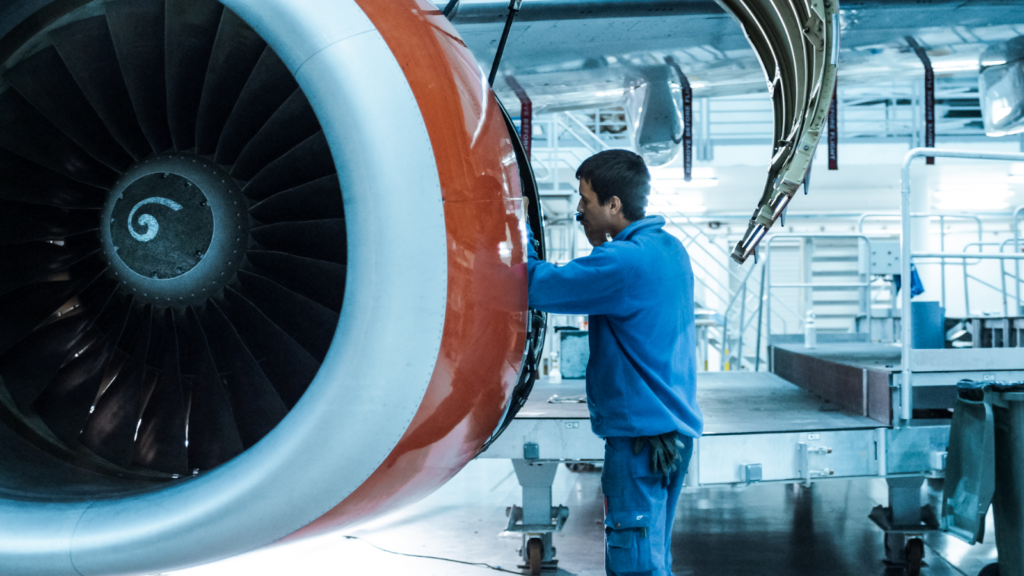In the fields of military and aerospace applications, certain standards are crucial for the safety, reliability, and durability of the components employed. A key standard in this context is MIL-C-26074, which establishes strict guidelines for electroless nickel plating. This guide seeks to clarify the importance of MIL-C-26074, offering readers a thorough insight into its role in improving the performance of components in severe conditions.
What Is MIL-C-26074?
MIL-C-26074 refers to a U.S. Military Standard that outlines the requirements and specifications for electroless nickel plating on various substrates. This coating process is crucial for enhancing the durability, wear resistance, and corrosion resistance of metal parts, especially those used in harsh environmental conditions. Unlike traditional nickel plating, electroless nickel plating, as dictated by MIL-C-26074, does not require an electric current to deposit the nickel layer. Instead, it utilizes a chemical reaction to ensure a uniform layer across the entire surface of the part, regardless of its shape or size. This standard is not just a measure of quality; it is a testament to the rigorous testing and uniformity essential for components used in military and aerospace applications.
The Importance Of MIL-C-26074
Ensuring Safety And Reliability In Critical Applications
The primary importance of MIL-C-26074 lies in its role in ensuring the safety and reliability of components used in military and aerospace sectors. These areas cannot afford the risk of component failure, as it could lead to dire consequences, including mission failure or loss of life. By requiring components to meet the standards set out in MIL-C-26074, the military ensures that all parts used in its machinery and equipment are resistant to wear, corrosion, and environmental extremities, thereby safeguarding operational integrity and human lives.
Standardization Across Industries
MIL-C-26074 plays a crucial role in standardizing quality across different applications and industries. This uniformity is essential as it ensures that all electroless nickel-plated components, irrespective of their manufacturer or country of origin, meet rigorous quality and performance standards. Standardization helps in maintaining consistency, reducing confusion, and simplifying the procurement process for defense and aerospace sectors, where the margin for error is minimal.
Protection In Extreme Environments
The specification outlines stringent requirements for electroless nickel plating, which significantly enhances the corrosion resistance and durability of treated parts. This is particularly important for components exposed to extreme environmental conditions such as high temperatures, salt spray, and abrasive substances. The protective layer ensured by MIL-C-26074 compliance not only extends the lifespan of these components but also maintains their functionality and reliability in challenging situations.
Benefits Of MIL-C-26074
Enhanced Corrosion Resistance
One of the primary benefits of MIL-C-26074 coatings is their exceptional corrosion resistance. These coatings create a barrier that protects the base metal from environmental factors such as saltwater, acids, and alkalis. This feature is particularly vital in marine, aerospace, and industrial settings where metal parts are frequently exposed to corrosive elements.
Uniform Coating Application
Electroless nickel plating, as specified by MIL-C-26074, ensures a uniform coating over the entire surface of a part, regardless of its shape or complexity. This uniformity is crucial for consistent performance and reliability, particularly for parts with intricate designs or internal surfaces that are hard to reach with traditional plating methods.
Improved Wear Resistance
The hardness and wear resistance of components are significantly enhanced with MIL-C-26074 compliant coatings. This results in a longer lifespan for parts that are subject to friction, abrasive environments, or high mechanical stress, reducing the need for frequent replacements and maintenance.
Increased Durability
Durability is another hallmark of MIL-C-26074 coatings. By providing a tough, protective layer, these coatings help extend the life of critical components, ensuring they can withstand tough environmental conditions without degradation. This is particularly important for military and aerospace applications where the integrity of each part is crucial.
Cost-Effectiveness
Despite the high level of protection it offers, MIL-C-26074 electroless nickel plating is a cost-effective solution for extending the life of metal parts. By reducing wear and corrosion, the need for part replacement and maintenance decreases, leading to significant cost savings over time.
Application Methods For MIL-C-26074
Surface Preparation
Before the application of electroless nickel plating, the surface of the component must be meticulously prepared. This involves cleaning to remove any contaminants, oils, or dirt and might include mechanical or chemical etching to enhance adhesion. Proper surface preparation is crucial as it directly influences the quality and durability of the final coating.
Bath Formulation And Control
The electroless nickel plating process requires a specific chemical bath, composed of a nickel salt, reducing agent, and various buffers and stabilizers. The precise formulation and maintenance of this bath are essential to the process, as they ensure consistent nickel deposition rates and properties across different parts and batches.
Immersion And Plating
Once the surface is prepared and the bath is ready, the components are immersed and the plating process begins. The duration of immersion depends on the desired thickness of the nickel layer. During this process, it’s critical to monitor parameters such as temperature, pH, and chemical composition to maintain uniformity and quality of the coating.
Post-Treatment
After the plating is complete, the parts undergo a thorough rinsing process to remove any residues. Post-treatment may also involve heat treatment to enhance the coating’s hardness and wear resistance. This step is tailored to the specific requirements of the part and the intended application.
Quality Control And Testing
Quality control is a fundamental aspect of the MIL-C-26074 application process. Each coated component must be inspected for thickness, adhesion, and uniformity to ensure it meets the stringent standards set by the specification. Non-destructive testing methods, such as X-ray fluorescence (XRF), are commonly used to verify coating thickness and composition.
How To Comply With MIL-C-26074
Understanding The Specification
The first step towards compliance is thoroughly understanding the MIL-C-26074 document. This includes all the requirements, conditions, and exceptions detailed within the specification. Organizations should have a clear grasp of the plating thickness required, types of tests to be performed, and quality standards to be met for the specific applications of their components.
Implementing Strict Process Controls
To comply with MIL-C-26074, manufacturers must implement strict process controls throughout the electroless nickel plating procedure. This includes controlling the chemical composition of the plating solution, maintaining specific temperature and pH levels, and ensuring consistent plating thickness and quality across all treated components.
Regular Testing And Documentation
Compliance requires regular testing and documentation to prove that the electroless nickel coatings meet or exceed MIL-C-26074 standards. This can include adhesion tests, thickness measurements, and corrosion resistance evaluations. Proper documentation of these tests, along with detailed records of the plating process, is essential for proving compliance.
Training And Qualification Of Personnel
Ensuring that personnel are properly trained and qualified to perform MIL-C-26074 compliant plating is crucial. This includes training on the specific requirements of the standard, as well as on the operation of plating equipment and the handling of chemicals and materials involved in the process.
Continuous Improvement And Auditing
Finally, compliance with MIL-C-26074 is not a one-time event but requires a commitment to continuous improvement. Regular audits and reviews of the plating process, along with updates to training and procedures as necessary, ensure ongoing adherence to the standards and the production of high-quality, compliant components.
Frequently Asked Questions
What types of industries commonly use MIL-C-26074 standards for electroless nickel plating?
The MIL-C-26074 standard is primarily used in the military, aerospace, marine, and industrial sectors due to the high demand for corrosion-resistant and durable components in these fields.
How does the electroless nickel plating process differ under MIL-C-26074 compared to traditional plating methods?
Electroless nickel plating under MIL-C-26074 does not require an electrical current, using instead a chemical bath that ensures a uniform coating, even on complex shapes and internal surfaces.
Can MIL-C-26074 compliant coatings be applied to non-metallic substrates?
The standard primarily focuses on metal substrates, but the preparation and adherence principles can be adapted for certain non-metallic substrates with specific pre-treatment procedures.
What are the environmental benefits of using MIL-C-26074 compliant electroless nickel plating?
The process promotes longer-lasting components, reducing waste and the need for frequent replacements, which aligns with sustainability goals by minimizing environmental impact.
How does thickness variation in MIL-C-26074 coatings impact component performance?
Uniform thickness is crucial for consistent protection and performance, as it ensures the entire component is equally resistant to wear and corrosion, extending its service life.
Are there specific temperature conditions for applying MIL-C-26074 coatings?
Yes, the chemical bath and the plating process must be maintained within specific temperature ranges to ensure the proper chemical reaction and adherence of the nickel plating.
How do companies ensure their electroless nickel plating processes are MIL-C-26074 compliant?
Companies must adhere to stringent process controls, perform regular quality checks, and maintain detailed documentation of their plating processes to ensure compliance.
Can MIL-C-26074 coatings be repaired or re-plated if damaged?
Yes, provided that the base material is properly prepared and the re-plating is performed following the same MIL-C-26074 guidelines to ensure integrity and performance.
What are the consequences of failing to meet MIL-C-26074 standards?
Non-compliance can lead to component failure, operational risks, and non-acceptance of parts for military or aerospace applications, resulting in significant financial and reputational damage.
How does MIL-C-26074 contribute to cost savings in military and aerospace applications?
By enhancing the durability and longevity of components, MIL-C-26074 compliant coatings reduce the need for frequent maintenance and replacements, leading to significant long-term cost savings.

